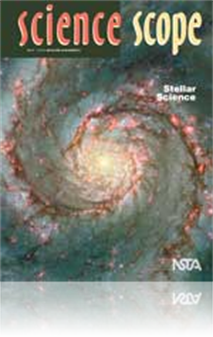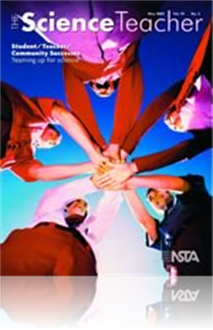All Resources
Journal Article
When taking students outside to see the stars is not an option, teachers can bring the stars inside the classroom. These instructions for building a portable planetarium also include suggestions for cross-cultural and social studies connections....
Journal Article
Science 101: What Causes Water's Surface Tension?
The term “surface tension” is commonly used to explain phenomena like a paper clip resting on the surface of water or the “dome” of water that forms on a penny when water is carefully added to it drop-by-drop. You can also see surface tension...
Journal Article
Commentary: A Testable Prediction
An opinion piece about the definition of "hypothesis." ...
Journal Article
Mosquitoes on Maui: Students conduct research for an island-wide mosquito study
Science students participate in a year-long, school-based study involving the Maui Public Health Department to define mosquito behavior and distribution due to an outbreak of dengue fever, a disease spread by Mosquitoes. ...
Journal Article
High Schoolers in Motion: Imparting Newtonian knowledge to elementary students
As part of an initiative called "Partners in Education," students from a high school principles of engineering course instruct fifth graders in Newton's laws. ...
Journal Article
Science Sampler: A slice of solar cooking
Using the principles of scientific investigation, students design a solar cooker using materials supplied by the teacher. Students then spend individual time designing a solar cooker on their own. Afterward, students are placed in groups to coopera...
Journal Article
Tried and True: Egg-in-the-bottle demonstration
The Egg-in-the-bottle was the first demonstration performed by Don Herbert on his “Watch Mr. Wizard” television show, which premiered in 1951. This classic demonstration continues to delight students today and should be included in every middle s...
Journal Article
Students Teaching Students: Launching interest in astronomy
A group of educators and astronomers train high school students to teach astronomy to elementary students and their families. The main goal of the program is to promote careers in science and science education to elementary and high school students....
Journal Article
Meeting the MOON from a Global Perspective
The MOON Project (More Observations of Nature) engages middle school students and pre-service teachers in a long-term (16-week) investigation of the Moon. It provides an opportunity to share, via the Internet, their observations with other students ...





